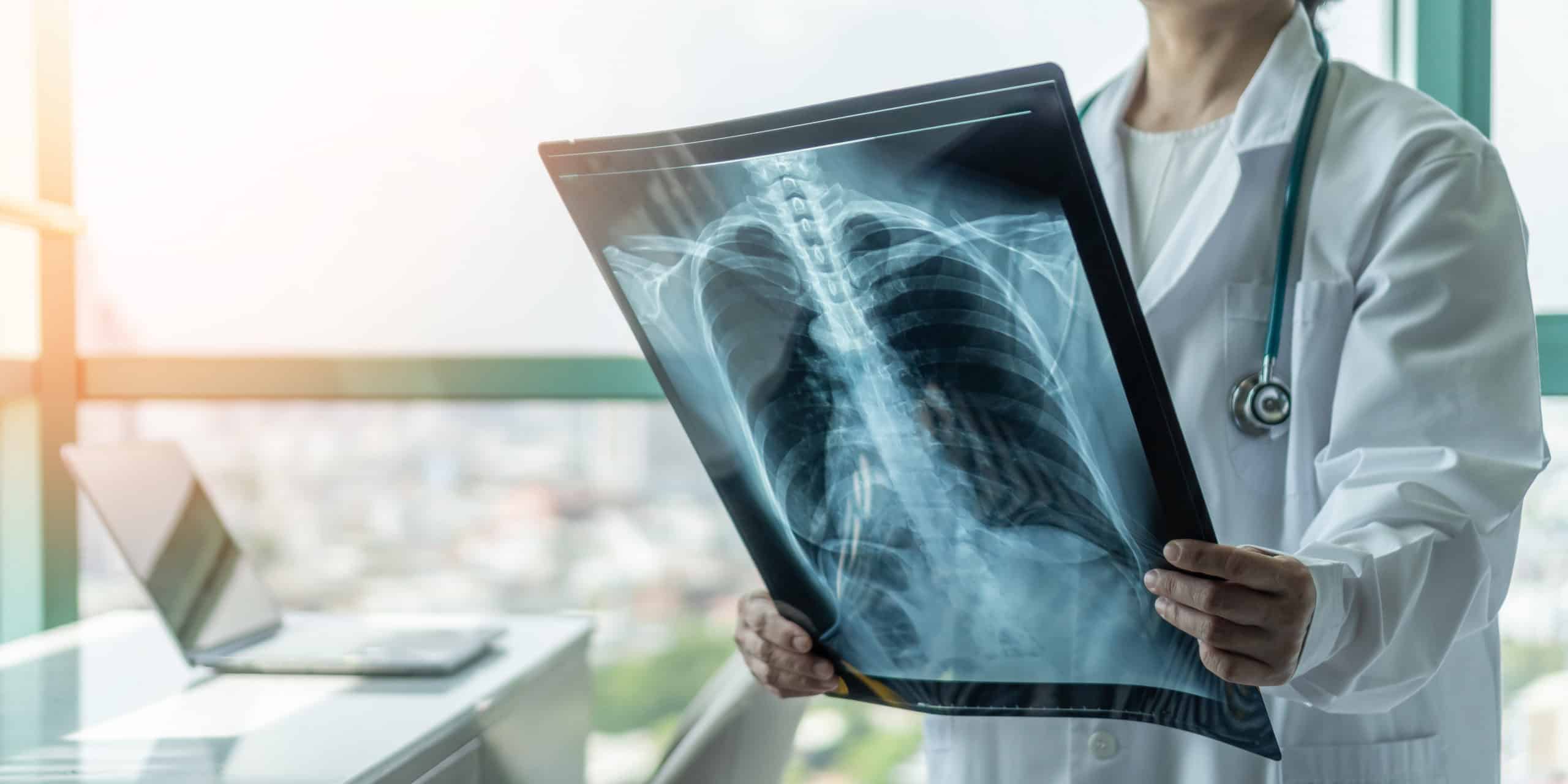If you’re sick or injured, seeking care in an emergency room may be the best thing for you to do. If you visit an Ally Medical Emergency Room, you will see a Board Certified Emergency Physician. One of the most important tools in helping to diagnose your injury or illness is our radiology testing equipment. This equipment includes a variety of radiology exams including X-ray, Computerized Tomograpy or CT Scans, and Ultrasound. All of these tests are available at Ally Medical Emergency Room. While we do not have a MRI machine at any of our locations, we can arrange for transfer if it is emergently needed.
Many patients may be unfamiliar with radiology tests, so we have compiled instructions on what test works best for different situations.
X-ray
X-rays are often our first line of imaging because it provides the least amount of radiation to a patient and is very quick. Radiographs (x-rays) use ionizing radiation that travels from the imaging equipment through the patient to the imaging detector (film).
We use X-rays to detect fractures (broken bones), dislocations (bones not in the right place), respiratory illnesses (pneumonia, collapsed lung, etc), and some abdominal problems (obstructions, foreign bodies, etc).
- Soft tissue injuries like a tendon or muscle injury will not show up on X-rays.
- Some fractures are very subtle and can be missed on plain X-ray, even with the best positioning and radiologists.
What to expect when getting an X-ray:

- The Radiologic Technologist will help position the body part being imaged so the correct diagnostic imaging can be captured.
- This typically does not hurt. If imaging an injured body part, there is often discomfort with certain imaging positions. The imaging technologist will do their best to keep you comfortable and make the exam as quick as possible while maintaining good diagnostic imaging procedures. We can also provide pain medication to make the imaging more comfortable.
- Most X-rays are typically done at the bedside but in some cases the patient may be taken to a special room. These tests take about 2-5 minutes to complete, the longest part is getting positioned!
CT
Computerized tomography (CT or CAT scans) utilize ionizing radiation, and it has a higher rate of exposure of radiation than plain X-ray which is why they are only used if the patient’s condition benefits from a diagnosis versus the risk of that radiation.
CT scans give a detailed, 360-degree view of the body anatomy that is scanned.
- Very helpful to diagnose organ injuries (like stroke, appendicitis, diverticulitis, etc) and fractures that could not be detected on plain x-rays, or complex fractures
- They quickly diagnose traumatic injuries like from a car accident
- Some studies require the use of contrast medium, which will help fill up solid organs or vessels. Contrast is processed through the kidneys, and we will do blood tests to ensure your kidneys are healthy enough to filter prior to the test.
What to expect when getting an CT Scan:
- The Radiologic Technologist will take the patient to a special room, and place them on the machine. This room is lead lined, and visitors are not allowed to be with the patient due to exposure to the visitor.
- This typically does not hurt. If imaging an injured body part, there is often discomfort with certain imaging positions. The imaging technologist will do their best to keep you comfortable and make the exam as quick as possible while maintaining good diagnostic imaging procedures.
- The scan will take 2-5 minute per body part scanned. This time on the “table” can be extended if more parts are scanned.
- The use of the contrast medium through your IV may make you feel warm all over or other symptoms. The Radiologic Technologist will tell you what to expect and when.
US
Ultrasounds (US) use low-frequency sound waves to produce imaging, and emit NO radiation during the scan.
Ultrasounds are frequently used to diagnose inflammation, swelling, fluid collections (cysts, tumors, or abscesses) and to monitor fetal growth or other complications.
Sound waves do not pass-through bone or air well, making limitations to what imaging can be accomplished.
US is typically used if you have concern for gallbladder disease, pelvic symptoms (reproductive based), or for artery/vein concerns.
What to expect when getting an Ultrasound:
- The Ultrasound Technologist will bring the machine to the patient and darken the room so the technologist can see the screen better.
- This typically does not hurt. If imaging an injured body part, there is often discomfort with certain imaging positions. The imaging technologist will do their best to keep you comfortable and make the exam as quick as possible while maintaining good diagnostic imaging procedures.
- The scan can take 15-45 minutes, as the tech will take many pictures and measure any concerning areas. This exam time can take longer if multiple areas are getting scanned.
MRI
Magnetic Resonance Imaging uses powerful magnets that pass radio waves through the body to produce an image with NO radiation. MRIs are not usually performed in an ER setting as they are not considered STAT exams, one of the only exclusions is an MRI for new spinal or brain injuries.
These images are very detailed, especially for soft tissue injuries. The images give great contrast between bones and surrounding soft tissues. MRI is best used to image soft tissues in the body such as: brains, tendons (knees and other joints), ligaments, muscles, cartilage, and the spinal cord. Most MRIs are performed on an outpatient basis after initial swelling has decreased.
Patients with certain implants (like a pacemaker) CANNOT have an MRI because the magnets in an MRI machine can damage them.
MRI exams are the longest type of exam, some may even last beyond an hour in a small confined space.
If you have any further questions about radiology services at Ally Medical, please call any of our locations to discuss.



